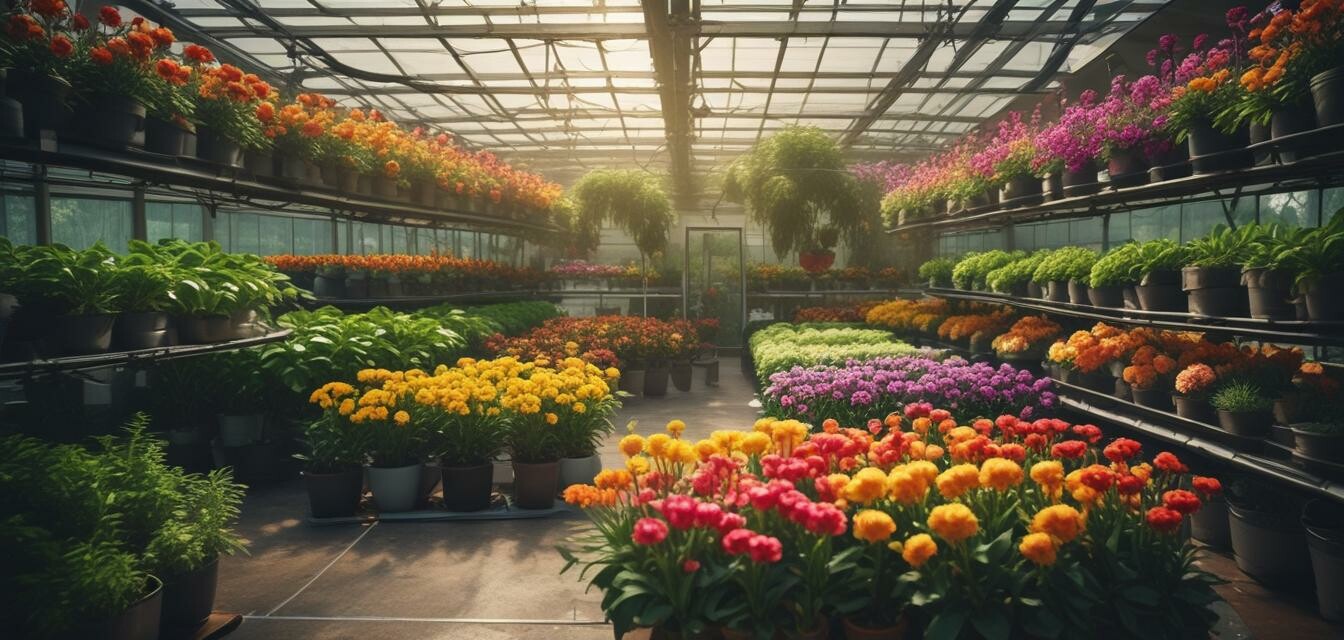
Best Flowering Plants for Indoor Hydroponics
Key Takeaways
- Flowering plants add beauty and freshness to your indoor space.
- Hydroponic systems offer an efficient way to grow vibrant flowers.
- Popular choices include orchids, marigolds, and petunias.
- Understanding specific nutrient needs is crucial for healthy blooms.
- Year-round cultivation is possible with the right care and equipment.
Indoor hydroponics presents an exciting opportunity to grow a variety of flowering plants. Unlike traditional gardening, hydroponics eliminates the need for soil, allowing you to cultivate plants in a controlled environment. This means you can enjoy fresh flowers indoors, regardless of the season. In this article, we'll explore some of the best flowering plants for hydroponics, their requirements, and tips for ensuring they thrive.
Why Choose Flowering Plants for Hydroponics?
Flowering plants can enhance aesthetics, purify the air, and uplift your mood. Here are a few reasons to consider growing them hydroponically:
- Space Efficiency: Hydroponics allows you to utilize vertical space, making it ideal for small homes or apartments.
- Controlled Environment: Hydroponic systems enable precise management of water, nutrients, and light, leading to optimal growth.
- Less Mess: Growing without soil means less mess and fewer pests commonly associated with soil-based gardening.
- Year-Round Growth: With the right setup, you can grow flowers any time of the year.
Top Flowering Plants for Hydroponic Systems
Here are some of the best flowering plants that thrive in hydroponic systems:
| Flowering Plant | Light Requirements | Growth Cycle | Special Care |
|---|---|---|---|
| Orchids | Moderate to Bright Light | 6-12 Months | Ensure good air circulation and humidity. |
| Marigolds | Full Sunlight | 3-4 Months | Regular trimming encourages bushier growth. |
| Petunias | Full Sunlight | 6-8 Weeks | Deadhead spent blooms to increase flowering. |
| Bougainvillea | Full Sunlight | 6-12 Months | Allow to dry slightly between watering. |
| Impatiens | Partial Shade | 3-4 Months | Keep soil moist, but not waterlogged. |
Best Practices for Growing Flowering Plants Hydroponically
To maximize your success with hydroponic flowering plants, consider the following tips:
Beginners Section
- Choose the Right System: Select a hydroponic system that suits your space and plant choice, such as deep water culture or nutrient film technique.
- Monitor pH Levels: Maintain the water pH between 5.5 to 6.5 for optimal nutrient absorption.
- Provide Adequate Light: Use quality grow lights to mimic natural sunlight, ensuring your plants receive 12-16 hours of light daily.
- Nutrient Solutions: Supplement with specialized nutrients designed for flowering plants to encourage robust blooms.
- Regular Maintenance: Monitor water levels, check for pests, and prune your plants as needed.
Challenges in Growing Flowering Plants Hydroponically
While hydroponics is an excellent method for growing flowering plants, there can be challenges:
- Pests and Diseases: While less common than in soil gardening, pests can still be an issue. Regular checks can help mitigate this.
- Nutrient Imbalance: It’s crucial to maintain the right balance of nutrients to avoid nutrient burn or deficiencies.
- Water Quality: Ensure your water source is clean and free of contaminants that can harm plant growth.
Conclusion
Growing flowering plants in hydroponics can effectively optimize your indoor gardening experience. From the stunning beauty of orchids to the cheerful blooms of marigolds, there's a wide variety of plants to choose from. With the right knowledge and care, you can cultivate a vibrant indoor garden throughout the year.
Pros
- Enhances indoor aesthetics.
- Efficient use of space.
- Less risk of pests.
- Year-round flowering potential.
Cons
- Requires initial investment in hydroponic systems.
- Constant monitoring needed.
- Learning curve for beginners.
Ready to start your hydroponic garden? Check out our countertop hydroponic kits to find equipment that fits your needs. For more insights, don’t forget to visit our growing techniques page, and ensure you’re providing the right environment with environmental control equipment.